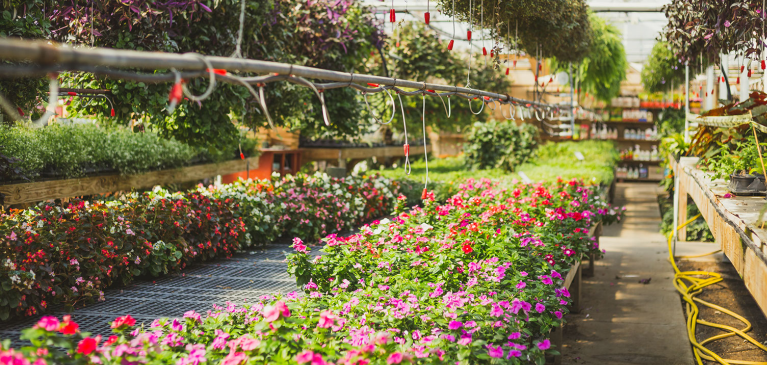
For 2022, many greenhouse owners have coined the term “cautiously optimistic,” according to Emelee Rajzer, senior financial services officer for GreenStone Farm Credit Services.
The greenhouse industry has had two very successful years in a row. This was fueled by the pandemic, which increased consumer demand. As most of the country shut down and businesses were forced to either go virtual or offer curbside service, garden centers throughout most of the Midwest and South were allowed to open. Working from home, consumers had a larger discretionary income amplified by government stimulus money.
Michigan’s greenhouse industry, which largely consists of bedding plants – pots, flat containers and hanging baskets – is dominated by wholesale sales through brokers.
“2021 was another successful year, but not as great as 2020,” Rajzer said. “We think 2022 is going to be a good year, but there are a few things in play, such as the weather, consumer demand, and increased costs in labor, trucking, raw goods and energy, to name just a few.”
Role of weather
While greenhouses provide a controlled environment for growth, they do not control outside weather, its impact on consumer demand, or ability for growers to sell through their products.
A steady spring warm-up bodes favorably, while cold and rainy weather quickly eats into the ability to move products.
“The industry is heavily tied to the weather, and not just regionally, as a lot of growers are supplying product for southern states,” she said, noting that a sunny Mother’s Day weekend will provide a huge turnout at garden centers.
“But, if it’s cold, wet, and spitting snow in Oklahoma or other southern states, that changes everything, because garden centers will be holding product,” she said. “A lot of consumers will delay buying because they don’t want to be moving plants in and out of doors.”
The delay in sales will cause a bottleneck, she explained, as product is trying to move south, where it’s already flush with product not sold the week prior.
Growers time product for color, size, and height.
“There's only so much that can be done with plant growth regulators and trying to hold a crop in a controlled environment,” she added.
Farther north, many gardeners choose to wait for planting until Memorial Day weekend, but it still poses a risk to sales if it’s cold and unusually wet.
Wisconsin greenhouse growers focus more on regional, retail sales. But some Michigan growers ship to northeast Wisconsin, which warms up slower than Michigan with frost-free dates, also requiring careful timing.
Increased costs
With inflation and the cost of goods steadily rising, greenhouse growers in Michigan and Wisconsin fear consumer demand will not be as high as in 2021, and certainly not at the 2020 level. Consumers’ discretionary income has been eaten into with higher costs for staples, such as food, clothing, and energy.
When consumers have discretionary income and the economy is going well, the greenhouse traditionally does well.
“So, when the great recession happened in late 2007, early 2008, there were a number of years where it was very challenging with tight margins,” said Rajzer.
Sara Trattles, vice president of agribusiness lending for GreenStone, doesn’t see it being that gloomy, at least not yet, for the greenhouse industry.
“As discretionary income tightens, there is concern, but growers are pretty optimistic that's not sticking around,” she said. “The question is, will they buy two plants instead of four this year?”
One segment of sales will likely not soften. Millennials, who tend to be foodies, are propping up vegetable plant sales, which will likely remain strong as food costs continue to rise and consumers see the opportunity to grow their own food.
Rajzer added, “Even though we brought all these gardeners to the scene and the demand is probably still there for vegetables, when consumers look at $30 for hanging baskets, they may decide they’d rather take the kids to McDonald's to have a meal or purchase food from the grocery store. Much of this industry is not necessarily a need, it’s a want - and that's the difference.”
Labor challenges
While the industry fights to keep the cost to buyers affordable, it is also struggling with increased freight charges and attracting and keeping a seasonal employee workforce.
Greenhouse operations require producing a labor-intensive crop in a short, calculated window. One of the main concerns with growers across the board is a labor shortage of qualified workers. As a result, Trattles noted, more companies are switching to H2A, a federal program that allows foreign workers into the U.S. for agricultural work.
“With help wanted signs everywhere, greenhouse jobs are far above minimal wage,” Trattles said. “Some have resorted to the H2A program but are doing so at a premium cost -- $15.37 an hour that doesn't include housing, transportation and other services covered.”
Despite the challenges, growers are optimistic about 2022 – cautiously.
Tags
Request for Information | Apply Now | Agribusiness


